Top 10 Oklahoma Sooners: Defensive Backs
Every Thursday this summer, SI Sooners ranks the top 10 Oklahoma Sooners at their respective positions. Today: defensive backs.
-----
10. Jason Belser (1988-1991)
Coming to Oklahoma from Kansas City, Jason Belser patrolled the secondary for the Sooners mostly under head coach Gary Gibbs. A ball hawk, Belser finished his OU days tied for ninth on the career interceptions list, picking the ball off 13 times and returning one all the way back for a touchdown. A major contributor in 1990 and 1991, Besler was named first team All-Big Eight in 1991, capping off his Oklahoma career in style. Besler was then selected with the 192nd pick in the 1992 NFL Draft by the Indianapolis Colts, where he would make a nice NFL career for himself. Playing for nine years with the Colts and another two years with the Kansas City Chiefs, Besler finished his NFL career with 14 interceptions, returning three of those for touchdowns, and also forcing seven fumbles over his professional career.
9. Darrell Royal (1946-1949)
Before he went on to be a coaching legend at the University of Texas, Darrell Royal was a two-way standout for the crimson and cream. Splitting time at both quarterback and defensive back, Royal made all-conference in 1949 — and made his presence felt under Bud Wilkinson on the defensive side of the ball. After arriving in Norman from tiny Hollis, OK, Royal picked off opposing teams 18 times — a career mark that still stands above all others in Oklahoma football history. He famously tormented one of OU’s biggest rivals, logging three picks against then-Oklahoma A&M in the 1947 contest between the Sooners and the Cowboys. In lieu of a professional career as a player, Royal immediately took up coaching. With stops at NC State, Tulsa, Mississippi State and the Edmonton Eskimos early in his career, Royal eventually made his way to Austin, where he was responsible for a bulk of the Texas Longhorns’ national championship haul. Royal led the ‘Horns to sit atop college football in 1963, 1969 and 1970.
8. Zac Henderson (1974-1977)
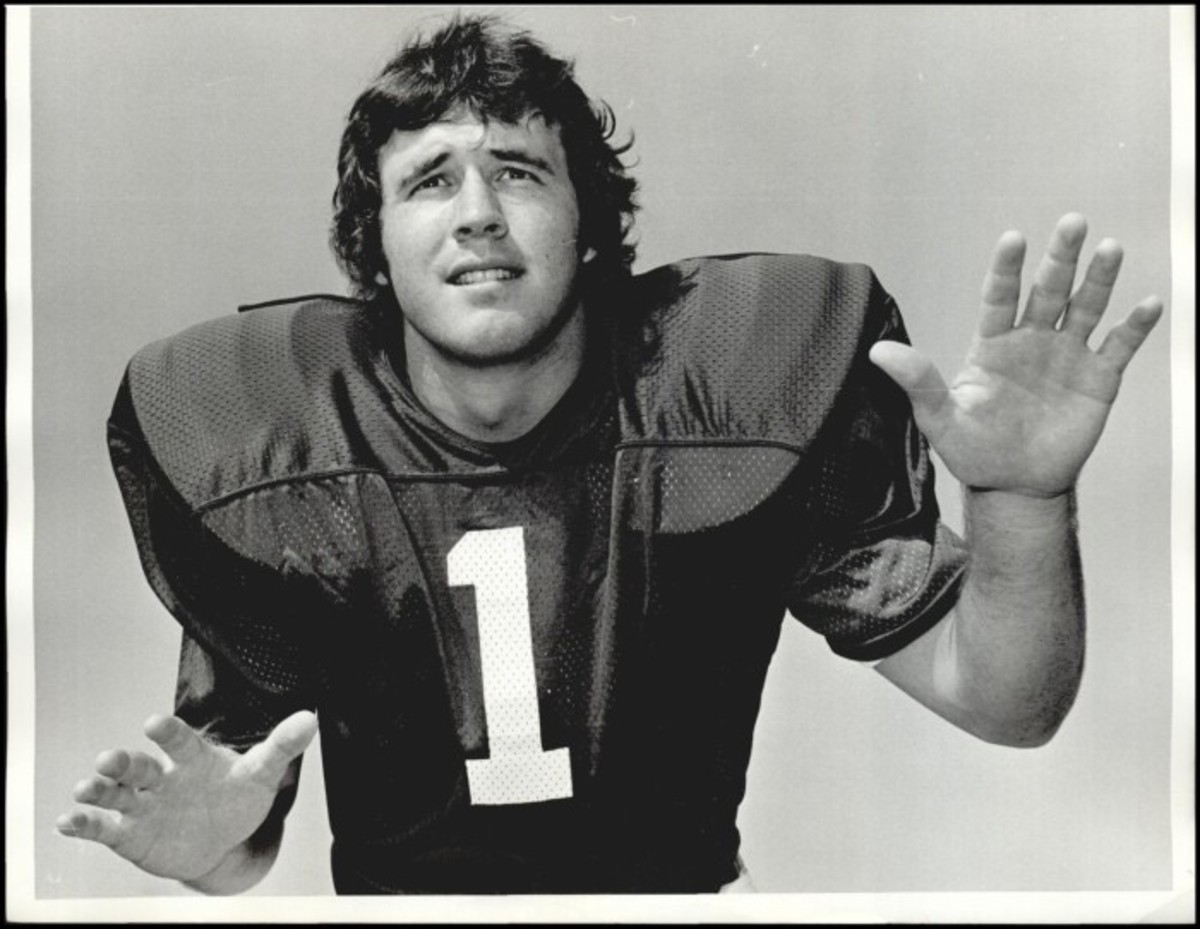
Zac Henderson arrived in the heyday of defense at Oklahoma, yet he was still able to force his way into the starting lineup as a true freshman. Head coach Barry Switzer said Henderson’s elite play was due to not only his size and speed, but his intelligence, as Henderson hauled in 15 interceptions over his career, tied for the fourth-most in school history. The Burkburnett, TX, product was named an All-Big Eight selection three times, and was also named an All-American twice, and was named an unanimous All-American in 1977. Henderson was so good, he was the first true freshman to start on an Oklahoma defense (the 1974 defense no less), since the NCAA had reinstated freshman eligibility in 1972. Henderson went on to play for four years in the Canadian Football League, as well as playing one season for the Philadelphia Eagles. He died last April at the age of 64 after a long illness.
7. Tony Peters (1973-1974)
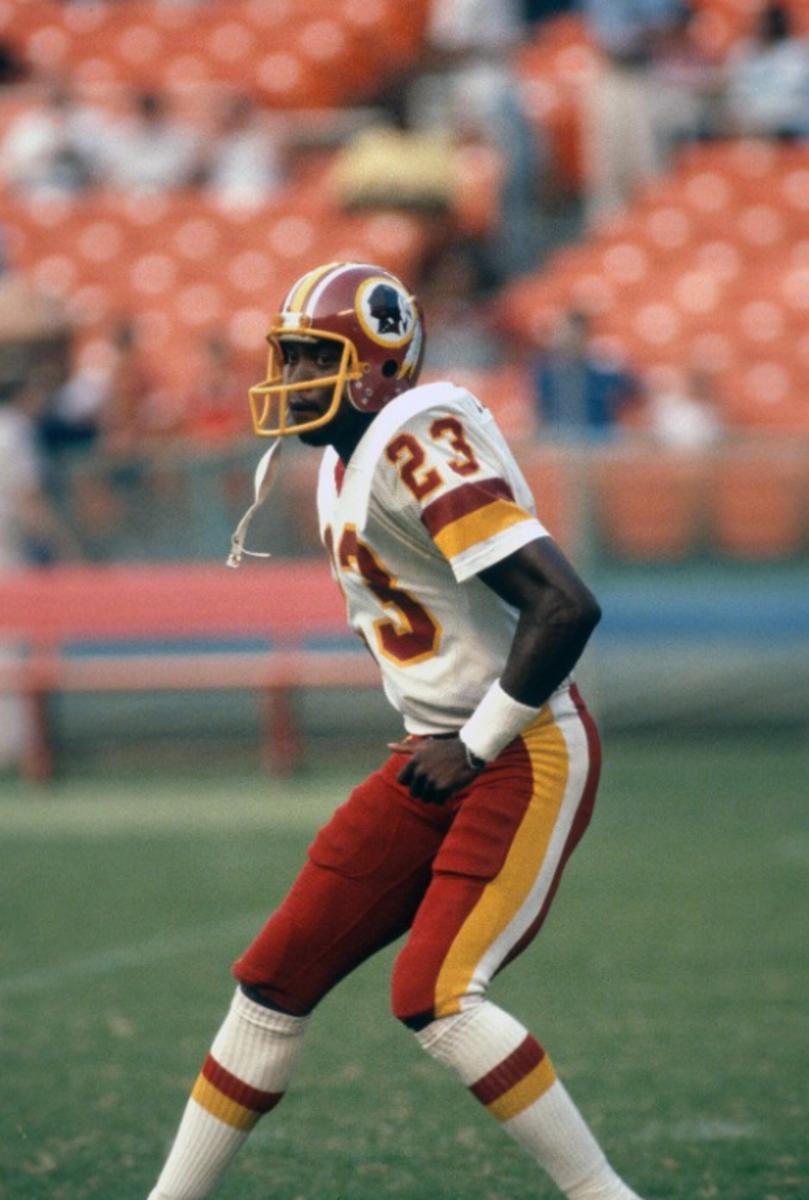
Though Tony Peters didn’t spend as much time at Oklahoma as others on this list, he took advantage of the time he did spend in Norman. From tiny Pauls Valley, OK, Peters became one of the key members in the secondary on Oklahoma’s historic 1974 defense, Peters’ talent was undeniable even though he wasn't voted to the All-Big Eight team. Blessed with a knack for finding the football, Peters was selected in the fourth round by the Cleveland Browns in the 1975 NFL Draft. He’d stay with the Browns for four seasons before making the switch to Washington, where he played for seven seasons. A Pro Bowl selection in 1982, Peters made a couple of key players in Super Bowl XVII to help seal the 27-17 victory for Washington over the Miami Dolphins.
6. Darrol Ray (1976-1979)
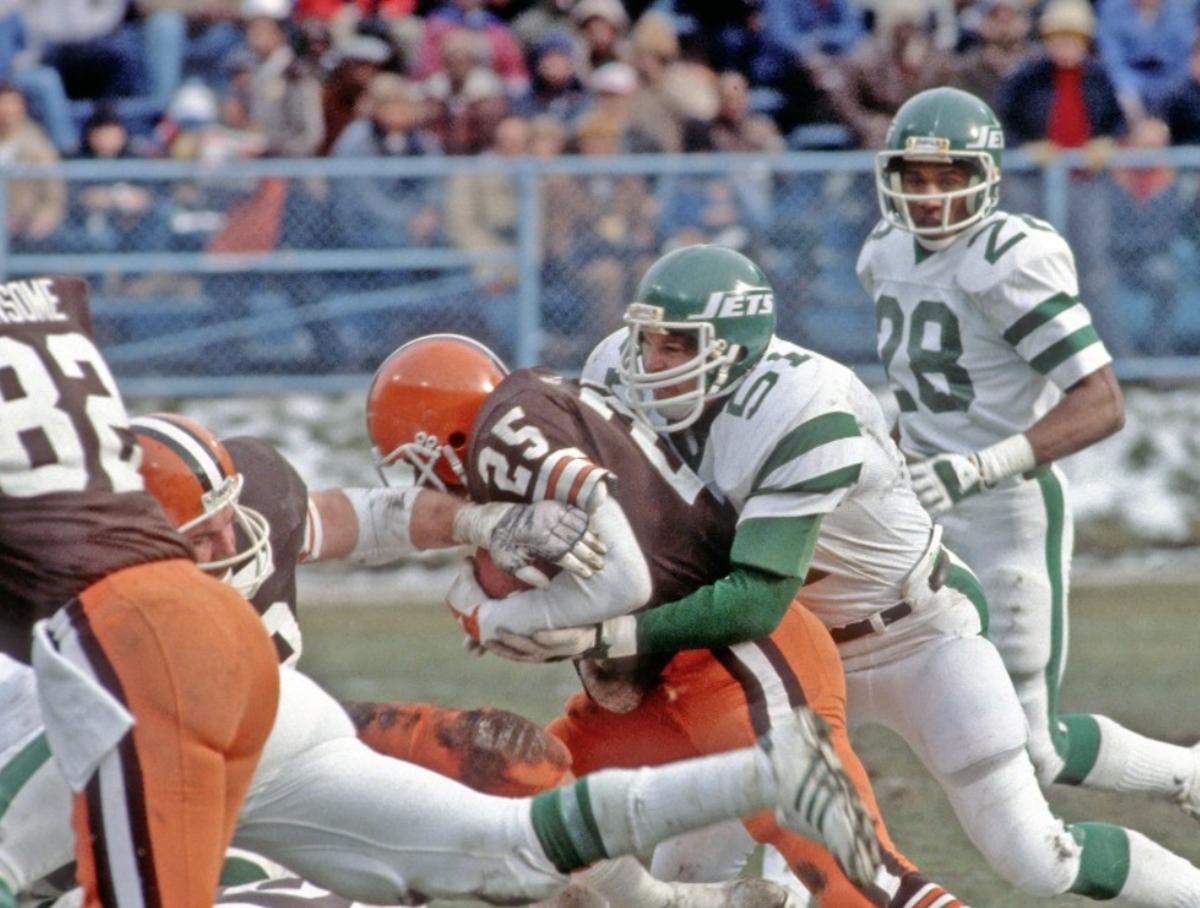
Arriving at Oklahoma from Killeen, TX, Darrol Ray was actually recruited to play quarterback under Barry Switzer. But a crowded depth chart meat Ray’s plays would be altered, shifting to the other side of the football. That didn’t seem to bother Ray, however, as he was one of the most gifted athletes to play for the Sooners. Ray was twice named to the All-Big Eight first team, and was also recognized as a second-team All-American. He finished his Oklahoma career tied with Henderson for fourth on the all-time interception list (15), before getting drafted in the second round of the 1980 NFL Draft by the New York Jets. In his five-year NFL career, Ray totaled 21 interceptions, three forced fumbles, five fumble recoveries and eight touchdowns for the Jets. One or the most noteworthy of those eight touchdowns came in the 1982 playoffs the Ray made a 98-yard house call, the longest pick-six in the history of the NFL Playoffs.
5. Randy Hughes (1972-1974)
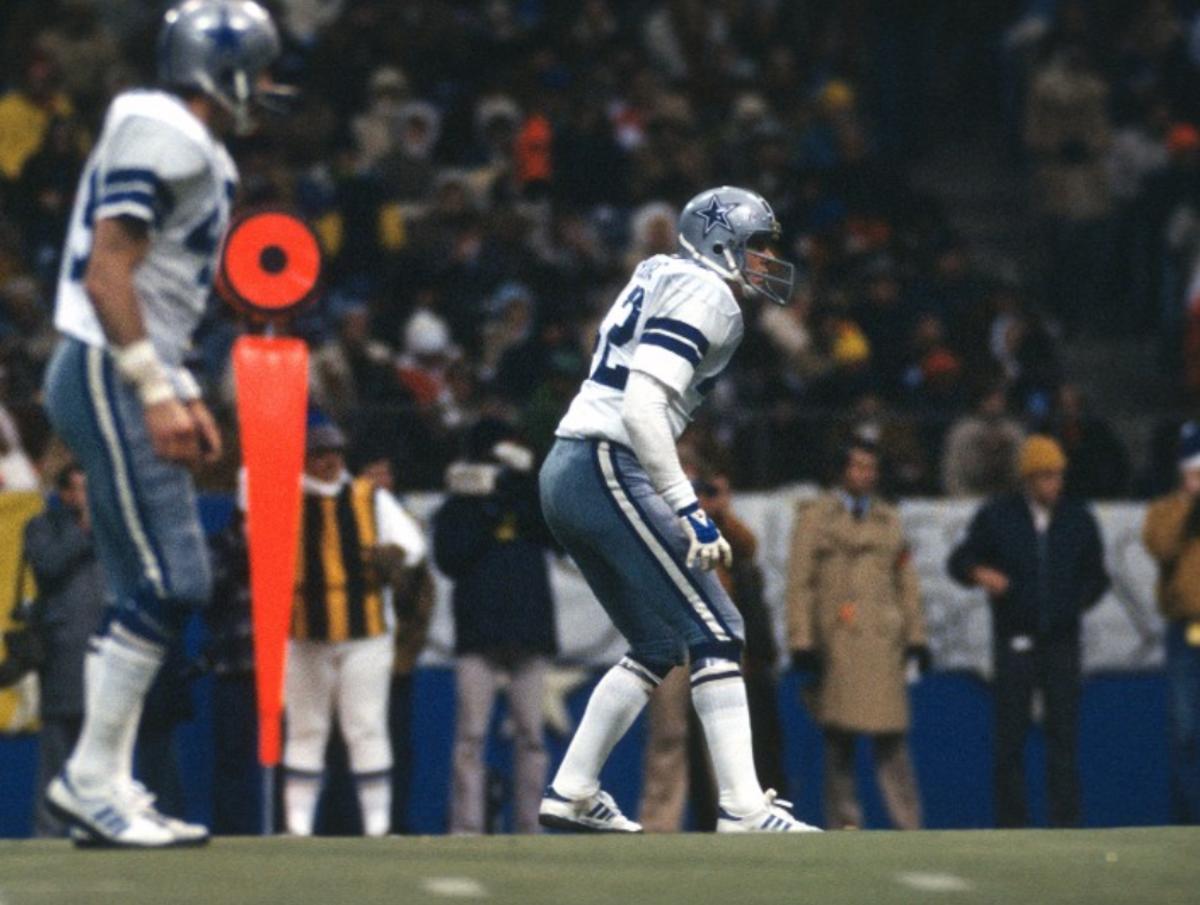
Randy Hughes’ storied career started all the way back in high school, where he was named the Prep Player of the Year by the Tulsa World, the first defensive back to ever win the award. Deciding to attend OU out of Tulsa Memorial High School, Hughes didn’t take long to make his mark. A three-year starter on some of the best defenses in school history, Hughes finished his OU career with 14 interceptions, tied with Derrick Strait for the seventh most in school history. Three of those came against the Nebraska Cornhuskers in 1974, as he also recorded 11 tackles en route to OU’s 28-14 victory, a major part of Oklahoma’s national title run. He was named a two-time first-team All-Big Eight selection, and was also honored as a first-team All-American in 1974. Hughes was drafted in the fourth round of the 1975 NFL Draft by the Dallas Cowboys, where he would go on to have a six-year NFL career. While his professional career was plagued by injuries, Hughes did shine on the biggest stage, recording five tackles, a pick and two fumble recoveries in Dallas’ Super Bowl XII victory.
4. Brandon Everage (1999-2003)
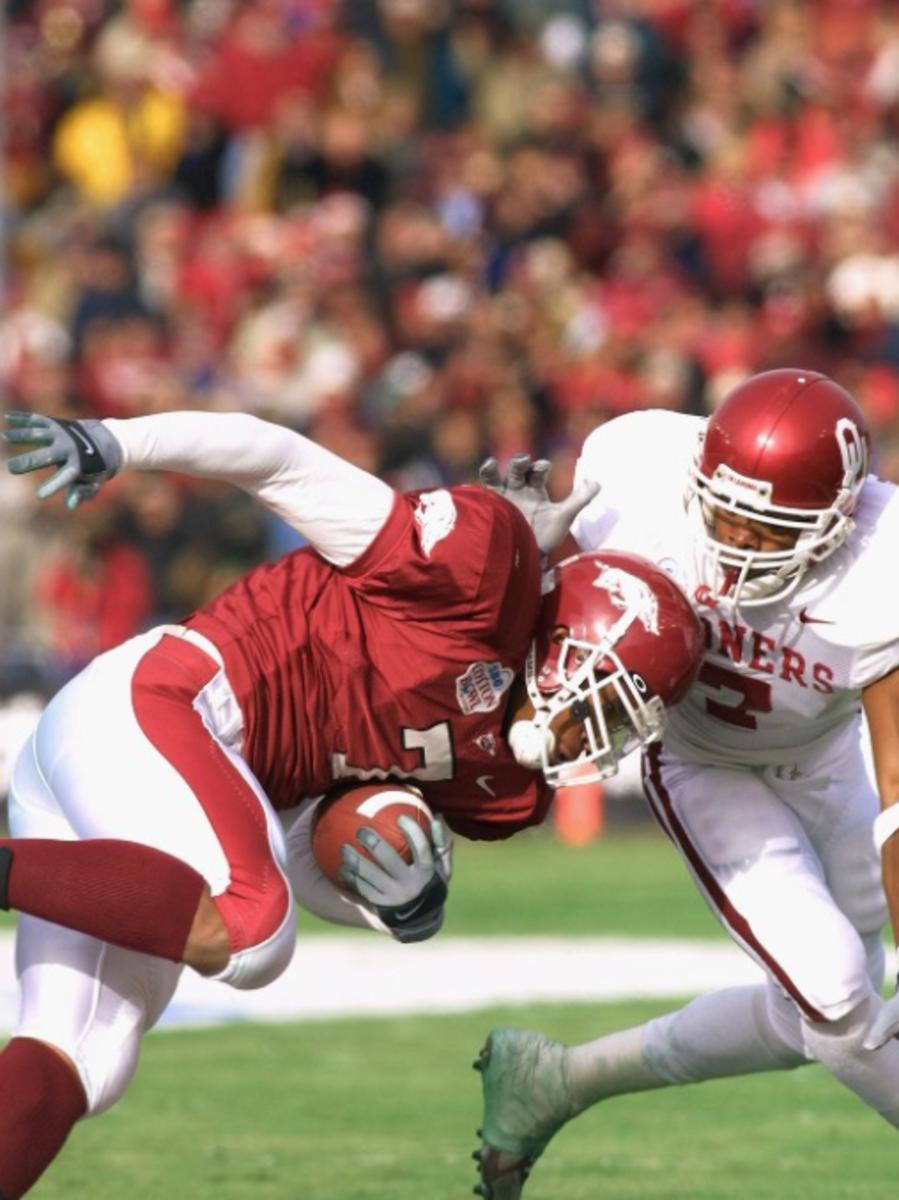
Brandon Everage was another player who arrived at Oklahoma as a quarterback, only to get shifted over to the other side of the football. His move to safety was one opposing wide receivers and running backs would forever regret, as Everage will stand as one of the hardest hitting tacklers in Sooner history. Pairing up with Roy Williams, the safety duo dominated the Big 12 throughout Bob Stoops’ early years on campus. Not only could he hit, but Everage finished his career at Oklahoma with 280 tackles, 10 interceptions, 27 pass breakups and four forced fumbles. The Granger, TX, product was named to the All-American team in 2002, and helped deliver Oklahoma’s seventh National Championship in 2000.
3. Derrick Strait (1999-2003)
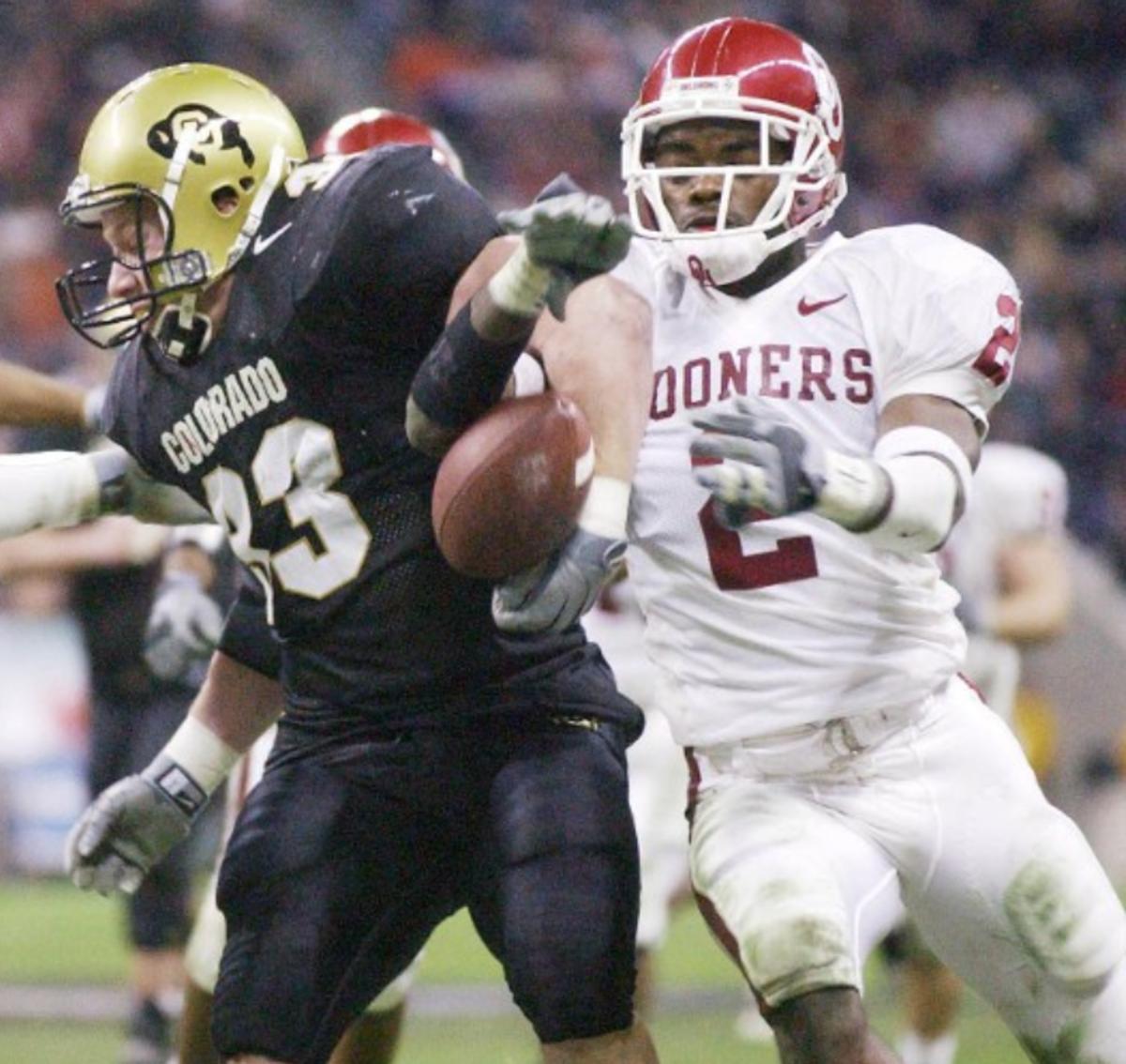
The greatest corner in Oklahoma history, Derrick Strait is tied with Randy Hughes for the seventh most career interceptions in program history with 14. As a freshman, Strait helped save the season. The youngster from Austin broke up a pass as time waned against the Oklahoma State Cowboys to help preserve OU’s perfect season, allowing the Sooners to head to Miami and effectively pitch a shutout against the Seminoles. Winning a national title in 2000, Strait only got better as his career went on with Oklahoma. In 2003, he was awarded the Bronko Nagurski Trophy for the best defensive player in the country, and the Jim Thorpe Award for the best defensive back in college football. A two-time All-Big 12 honoree, he was also named a consensus All-American in 2003. Setting a program record for passes broken up (53), Strait was taken in the third round of the 2004 NFL Draft by the New York Jets, but injuries derailed his professional career.
2. Rickey Dixon (1984-1987)
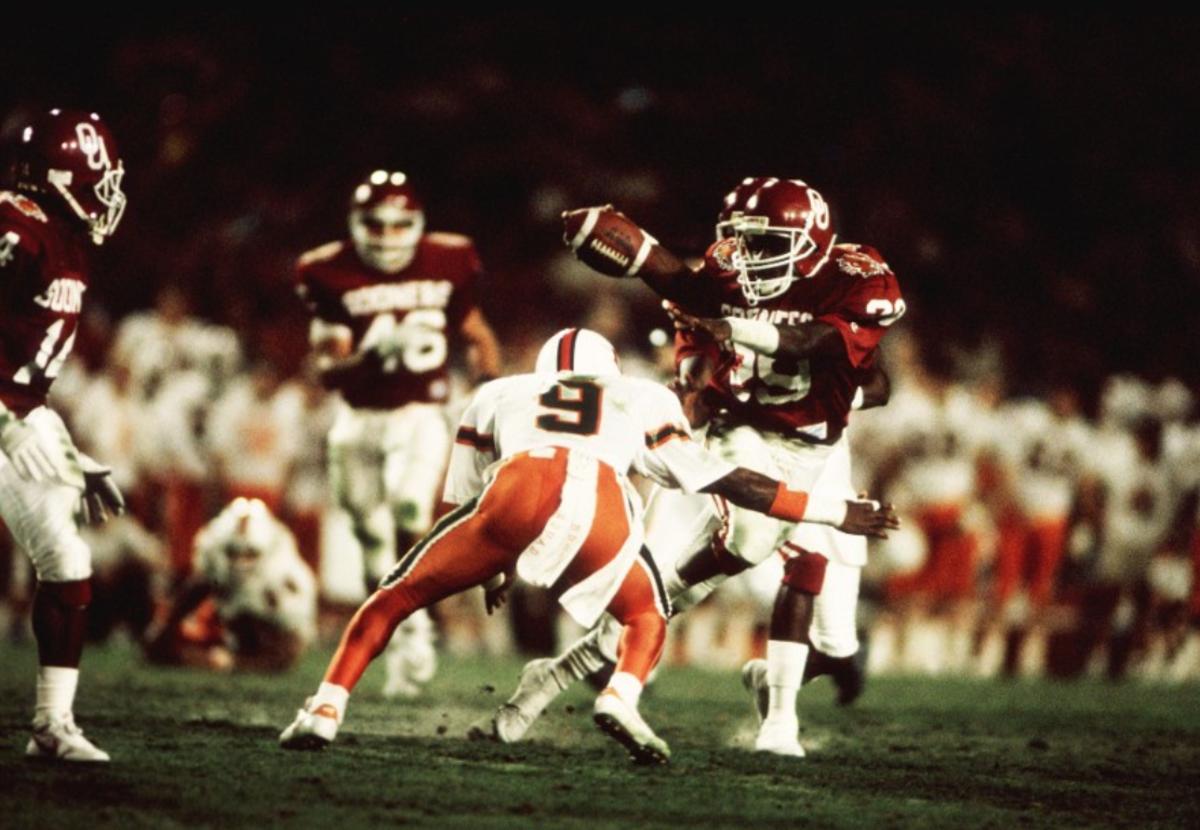
Rickey Dixon was no stranger to big-time performances on the biggest stage. Such was the case when the Sooners headed up to Lincoln to square off with Nebraska in the “Game of the Century II”. Dixon proved to be the difference agains the top offense in the country, the Sooner safety plucked two crucial interceptions, the second of which sealed the win for Oklahoma. Dixon became the first Sooner to win the Jim Thorpe Award in 1987, and he was named to the All-Big Eight team in ’86 and ’87, as well as a consensus All-America in 1987. Dixon finished his career at Oklahoma with 17 interceptions, just one shy of Royal’s record mark of 18. The Cincinnati Bengals selected Dixon with the No. 5 overall pick in the 1988 NFL Draft. He spent five years with the Bengals before playing a season with the Los Angeles Raiders in 1993. He was elected into the College Football Hall of Fame in 2019.
1. Roy Williams (1998-2001)
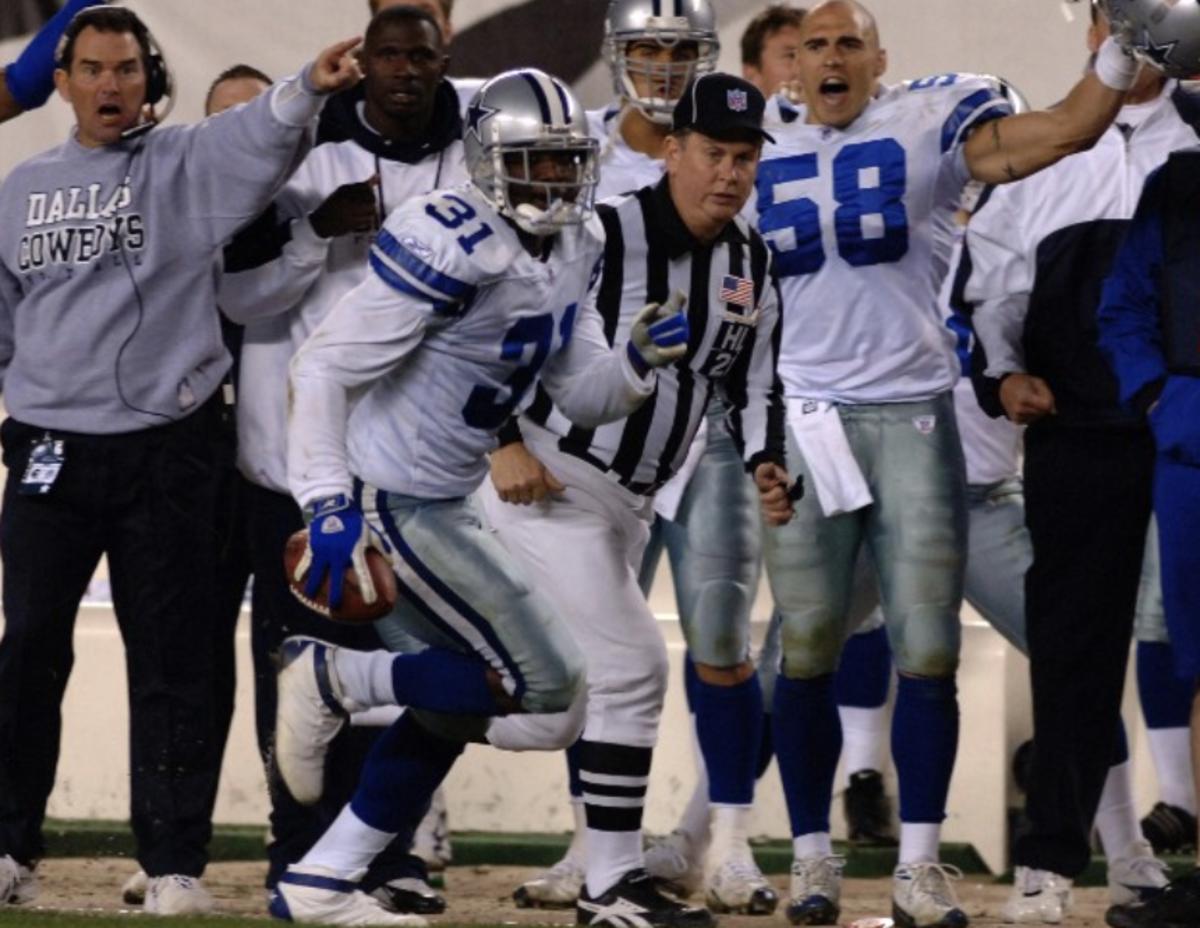
There’s not a single wide receiver or running back in the country who wanted to meet with Roy Williams over the middle of the field. Versatile enough to cover anyone the offense threw at him, Williams was one of the most gifted safeties to come up and lend support on the ground. And while he immediately made an impact on the Oklahoma defense, playing a key role in OU’s 2000 National Championship, it would be 2001 when the Sooner safety would become an icon in college football history. With the Texas Longhorns in the shadow of their own end zone hoping to engineer a late game winning drive, Superman took flight. Perfectly timing the snap, Williams leapt over the Longhorn blockers, blindsiding Chris Simms in the end zone and knocking the football loose. Teammate Teddy Lehman plucked the ball out of the air and walked into the end zone for one of the easiest pick-sixes recorded —a play that is now a play synonymous with OU-Texas and the Cotton Bowl. Williams won the Nagurski Trophy and Thorpe Award in 2001, and was names Consensus All-America in 2001 as well. The Dallas Cowboys selected the star safety with the eighth pick in the 2002 NFL Draft, where Williams would go on to spend seven seasons. He was named a Pro Bowler five times, and was elected first-team All-Pro in 2003. Williams was so effective, the NFL banned the horse-collar tackle, a rule that became known as the “Roy Williams Rule”. After his stint with the Cowboys, Williams played a pair of seasons in Cincinnati to close out his NFL career.
